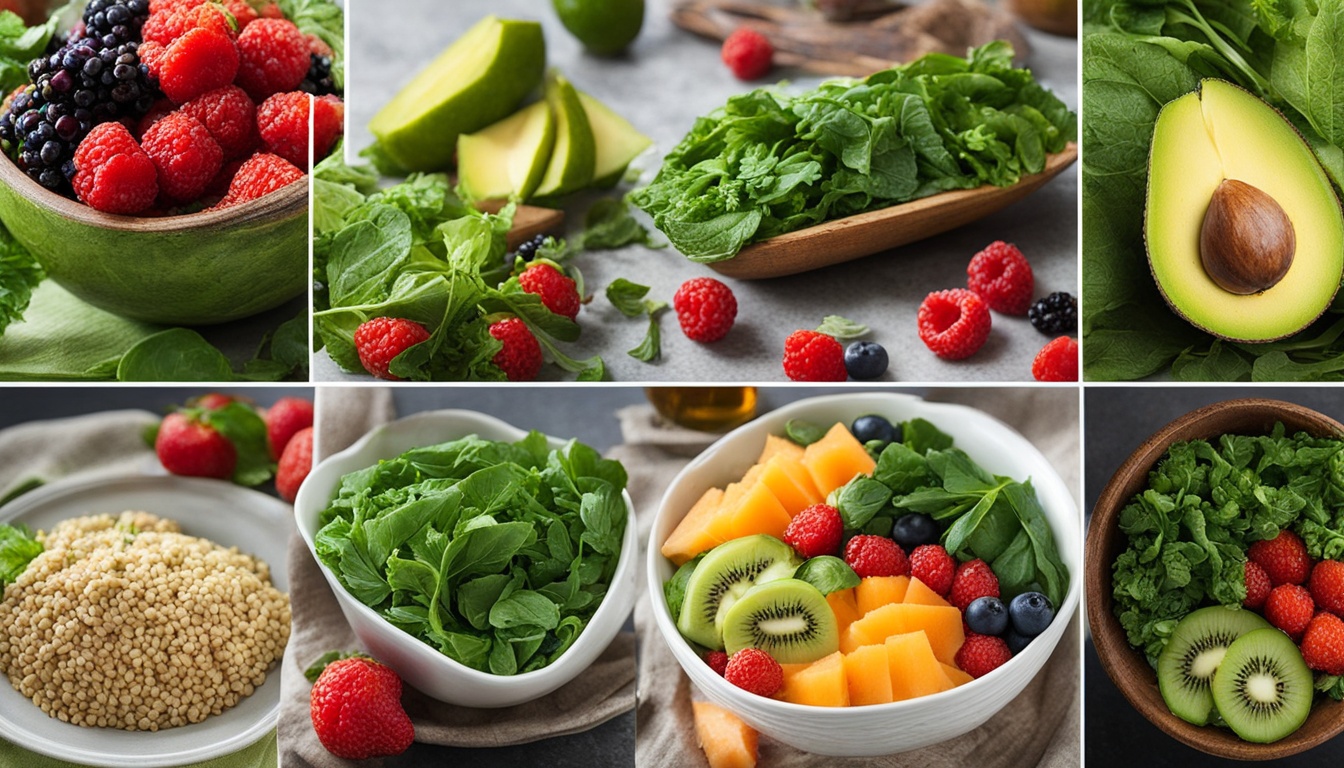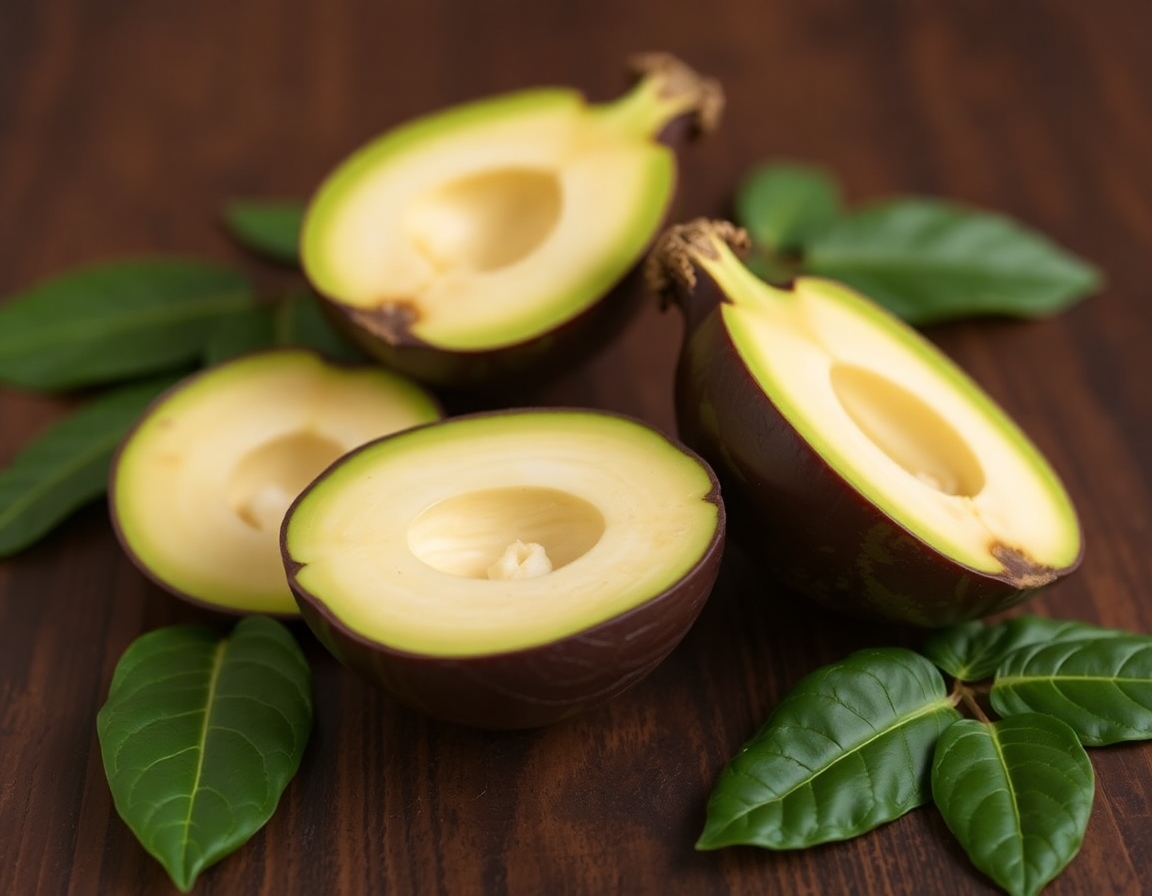Keeping a balanced diet with low glycemic foods is key for managing blood sugar and staying healthy. It also lowers the risk of diabetes and heart disease. This guide will explain the glycemic index and why eating low GI foods is good for you. It will also give you a list of essential items to keep in your kitchen for a healthy diet.
Key Takeaways
- Low GI foods have a glycemic index of 55 or less, meaning they digest slowly and help keep blood sugar stable.
- Choosing these foods can help manage diabetes and lower the risk of chronic diseases. It also aids in weight control.
- Adding a mix of low GI foods like whole grains, fruits, veggies, and lean proteins gives you energy and boosts health.
- Having low glycemic groceries at home makes it simpler to prepare healthy meals.
- Mixing high and low GI foods helps prevent blood sugar highs and keeps your energy steady all day.
What is the Glycemic Index?
The glycemic index (GI) measures how fast a food raises blood sugar levels. Foods with a low GI digest slowly, causing a steady rise in blood sugar. Eating these foods can help control blood sugar, manage weight, and reduce the risk of diabetes and heart disease.
Understanding the Concept of Low Glycemic Foods
Low glycemic foods have a GI of 55 or less. They are rich in fiber, protein, or healthy fats, slowing down the digestion of carbs. Examples include:
- Non-starchy vegetables (e.g., broccoli, spinach, cauliflower)
- Whole grains (e.g., quinoa, oats, brown rice)
- Legumes (e.g., lentils, chickpeas, black beans)
- Nuts and seeds
- Certain fruits (e.g., berries, apples, pears)
On the other hand, high glycemic foods (GI of 70 or above) are quickly digested, causing a fast rise in blood sugar. These include refined carbs, sugary snacks, and processed foods.
The Benefits of Incorporating Low GI Foods in Your Diet
Eating a diet full of low glycemic foods offers many benefits:
- Improved Blood Sugar Management: These foods help keep blood sugar levels stable, which is great for people with diabetes or prediabetes.
- Weight Management: They make you feel full and satisfied, helping you stay at a healthy weight or lose weight.
- Sustained Energy: The slow release of glucose gives you energy all day, avoiding midday crashes.
- Reduced Risk of Chronic Diseases: Eating these foods can lower the risk of type 2 diabetes, heart disease, and some cancers.
By learning about the glycemic index and eating more low GI foods, you can improve your blood sugar control, weight, and overall health.
Bread and Grain Options
When making a low glycemic grocery list, focus on bread and grain options that are wholesome. Choose dense, multigrain breads with lots of grains. Also, go for sourdough and raisin breads. For breakfast, pick traditional porridge oats, high-fiber cereals, and muesli. These options give you energy that lasts all day. It’s important to avoid refined grains and choose whole, nutrient-rich ones to keep your blood sugar balanced.
Wholesome Bread Choices for a Low Glycemic Diet
Low glycemic bread often has whole grains like whole wheat, rye, or sprouted grains. It also includes seeds, nuts, or legumes. These ingredients make the bread nutritious and lower in GI. This type of bread is good for people with diabetes or those who want to avoid blood sugar spikes.
Nutritious Breakfast Cereals to Start Your Day Right
- Oats and muesli give you energy slowly, keeping your blood sugar stable in the morning.
- High-fiber cereals made with whole grains are also great for a low glycemic breakfast.

“Incorporating low glycemic bread into a diet may aid in weight management due to its higher fiber content, promoting longer-lasting satiety and controlled appetite.”
The glycemic index (GI) ranges from 0 to 100, with a GI of 55 or less being low. This makes low glycemic bread perfect for stable blood sugar. You can choose from whole wheat bread, sprouted grain bread, rye bread, multigrain bread, and gluten-free bread. Each type has its own taste and nutritional benefits.
Fresh Produce Picks
Boost your grocery list with a bright mix of low glycemic fruits and vegetables. These foods are full of fiber, vitamins, minerals, and antioxidants. They help keep your health up and your blood sugar stable. From sweet berries to fresh leafy greens, there are many tasty low GI options for your shopping.
Colorful Low Glycemic Fruits and Vegetables
- Berries: Blueberries, raspberries, and blackberries are low in sugar and high in fiber.
- Citrus fruits: Oranges, grapefruits, and lemons are excellent low glycemic choices.
- Crisp apples and pears are satisfying low GI fruits.
- Leafy greens like spinach, kale, and romaine lettuce are nutrient-dense and low in carbs.
- Cruciferous vegetables such as broccoli, cauliflower, and Brussels sprouts are low glycemic powerhouses.
- Non-starchy root vegetables like carrots, beets, and radishes provide fiber and nutrients without spiking blood sugar.
- Tomatoes are a low GI vegetable that add flavor and antioxidants to your meals.
Adding a variety of these low glycemic fruits and vegetables to your meals can help manage your blood sugar. You’ll also enjoy the natural sweetness and crunch of your food.
“Low glycemic produce is an essential part of a balanced, blood sugar-friendly diet. Enjoy the fiber, vitamins, and antioxidants these foods provide while keeping your blood glucose in a healthy range.”
Low Glycemic Grocery List
Keeping a balanced, low glycemic diet is key for managing blood sugar and staying healthy. Having the right diabetes-friendly foods in your kitchen helps you make healthy meals and snacks. This list includes the top items you should get on your next shopping trip.
Bread and Grains
- Whole grain bread or wraps
- Brown rice, quinoa, or barley
- Oats (steel-cut or old-fashioned)
- Buckwheat or rye flour
- High-fiber cereal
Fruits and Vegetables
- Apples, oranges, berries, cherries
- Leafy greens, broccoli, carrots, bell peppers
- Frozen vegetables (for convenience)
Proteins
- Lean meats (chicken, turkey, fish)
- Eggs
- Nuts and seeds
- Legumes (beans, lentils, peas)
Dairy and Fats
- Low-fat or non-fat Greek yogurt
- Cottage cheese
- Avocado, olive oil, and nut butters
Beverages
- Water, unsweetened tea, or coffee
- Low-sugar or sugar-free options
Choosing low glycemic foods from this list helps you plan a balanced nutrition that supports blood sugar control and health. Adding these diabetes-friendly items to your shopping list makes sticking to a healthy lifestyle easier.

Protein Sources for a Balanced Diet
Add protein-rich foods to your diet for balance. Choose lean meats like chicken, turkey, and lean cuts of red meat. These are great low glycemic proteins that help you feel full and keep your blood sugar stable. Also, seafood such as salmon, tuna, and sardines are great for protein and healthy fats.
If you prefer plant-based options, try plant-based proteins like beans, lentils, tofu, and tempeh. These foods are packed with protein and important vitamins, minerals, and fiber. They support your health and help control blood sugar.
- Lean chicken, turkey, and red meat
- Fatty fish like salmon, tuna, and sardines
- Beans, lentils, tofu, and tempeh
By eating a mix of low glycemic proteins from animals and plants, you can have a balanced diet. This keeps you satisfied and gives you energy all day.
Whole Grains and Healthy Carbs
When making a low glycemic grocery list, focus on whole grain and complex carbs. These foods give you energy, fiber, and important vitamins and minerals. They help keep your blood sugar levels balanced.
Add whole grains like brown rice, quinoa, bulgur, barley, and oats to your meals and snacks. These carbs have a lower glycemic index (GI) than refined carbs. This makes them a better choice for managing blood sugar.
| Whole Grain | Net Carbs per Serving | Glycemic Index/Load |
|---|---|---|
| Oats (1 cup cooked) | 21g | Medium GL of 12 |
| Quinoa (1 cup cooked) | 34g | High GL of 23 |
| Bulgur (1 cup cooked) | 25.5g | Medium GL of 13.5 |
| Millet (1 cup cooked) | 39g | No data available |
| Couscous (1 cup cooked) | 34.5g | No data available |
| Wild Rice (1 cup cooked) | 32g | No data available |
| Spelt (1 cup cooked) | 44g | No data available |
| Popcorn (1 cup popped) | 6.5g | Medium GI of 55 |
| Barley (1 cup cooked) | 41.5g | Medium GL of 15 |
Studies show that eating more whole grains can lower the risk of type 2 diabetes. For instance, eating brown rice instead of white rice can cut diabetes risk by 16 percent. Switching to whole grains like bulgur wheat could lower the risk by up to 36 percent.
Choosing whole grains and complex carbs gives you a steady supply of healthy carbohydrates, fiber, and other important nutrients. This supports blood sugar management and metabolic health.
Fats, Oils, and Dairy Products
Healthy fats and low glycemic dairy products are key for a balanced diet. Choose heart-healthy fats like olive oil, avocado oil, and nut butters. These plant-based oils give you essential fatty acids without raising blood sugar.
For dairy, go for reduced-fat milk, plain yogurt, and low-fat ice cream. These low glycemic dairy choices give you protein and nutrients without big blood sugar spikes. You can also add full-fat dairy in small amounts because it has a low glycemic index.
“Fatty fish rich in omega-3 fatty acids, like salmon and sardines, can help lower cholesterol levels and are beneficial for a diabetes-friendly diet.”
By picking healthy fats and low glycemic dairy, you get the perks of balanced nutrition and blood sugar regulation. This is great for your low GI lifestyle.
| Food Item | Glycemic Index Score |
|---|---|
| Skimmed Milk | 37 |
| Full-fat Milk | 39 |
| Reduced-fat Soy Milk | 17-44 |
| Full-fat Soy Milk | 44 |
Beverages and Snacks
Make sure to add low glycemic beverages and low glycemic snacks to your grocery list. Choose water, unsweetened iced tea, fruit smoothies, and dairy drinks like skim lattes and soy milk. For snacks, go for whole grain crackers, nut and seed bars, and dried fruit. These options help keep your energy up and balance blood sugar levels.
Thirst-Quenching and Nutritious Options
Drinking enough water is key for good health and balanced nutrition. Here are some refreshing, low glycemic beverage choices:
- Water – The best choice for staying hydrated
- Unsweetened iced tea – A tasty option instead of plain water
- Fruit-based smoothies – Mix low GI fruits, veggies, and dairy or nut milk
- Skim lattes – Enjoy the creamy taste of dairy coffee drinks
- Unsweetened soy milk – A low-carb, plant-based milk choice
For snacks, try these low glycemic snacks:
- Whole grain crackers – Great with nut butter or low-fat cheese
- Nut and seed bars – Choose ones with less sugar
- Dried fruit – A sweet, chewy snack to enjoy in moderation
With these low glycemic beverages and low glycemic snacks in your pantry and fridge, you’ll stay hydrated, feel full, and keep blood sugar control all day.
Conclusion
Adding a low glycemic diet to your life is a big step towards better blood sugar management and overall health. It also leads to a more balanced, sustainable lifestyle. By choosing whole, nutrient-rich foods with a low glycemic index, you get steady energy and fewer cravings. This can lower your risk of chronic diseases.
Make it a habit to pick low GI foods when you go grocery shopping. Doing this can change your body and mind for the better. It’s a smart choice for your health.
Keeping a healthy lifestyle is a journey. The low glycemic grocery list is a great tool to help you move forward. It lets you eat foods that boost your health and energy. With some planning and careful shopping, you can make tasty, balanced meals. These meals will keep your blood sugar stable and your health in good shape.
Being consistent and taking a whole approach to your diet is key to success. Choosing low glycemic foods is a smart move for your health and wellness in the long run. Keep up with your commitment to this lifestyle. And always look for new ways to add the benefits of low GI foods to your everyday life.
FAQ
What is the purpose of a low glycemic grocery list?
A low glycemic grocery list helps manage blood sugar and supports health. It includes foods with a low glycemic index (GI). These foods give you energy that lasts and help control cravings.
What is the glycemic index?
The glycemic index (GI) measures how fast a food raises blood sugar. Foods with a low GI digest slowly, causing a gradual rise in blood sugar.
What are the benefits of incorporating low GI foods into my diet?
Eating low GI foods has many benefits. It helps control blood sugar, aids in weight management, and makes you feel full. It also lowers the risk of chronic diseases like type 2 diabetes and heart disease.
What types of bread and grain options should I look for on a low glycemic grocery list?
Choose whole grain and multigrain breads for your list. Also, consider sourdough and raisin breads. For breakfast, go for traditional oats, high-fiber cereals, and muesli. These options release energy slowly, keeping you fueled all day.
What low glycemic fruits and vegetables should I include in my grocery cart?
Great choices include berries, citrus fruits, apples, pears, tomatoes, leafy greens, and cruciferous vegetables. These foods are full of fiber, vitamins, and antioxidants. They help keep your blood sugar stable and support your health.
What other types of foods should I include on a low glycemic grocery list?
Don’t forget to add lean proteins, healthy fats, and low GI dairy and beverages. Pair your low GI carbs with proteins like lean meats, fish, beans, and plant-based options. This creates balanced, nutritious meals and snacks.
How can whole grains and complex carbohydrates benefit a low glycemic diet?
Focus on whole grains and complex carbs for your diet. Include brown rice, quinoa, bulgur, barley, and oats. These provide steady energy and fiber, helping to balance your blood sugar levels.
What types of fats and dairy products are recommended for a low glycemic diet?
Choose unsaturated fats like olive oil, avocado oil, and nut butters. For dairy, pick reduced-fat milk, plain yogurt, and low-fat ice cream. These options provide protein and nutrients without affecting your blood sugar much.
What low glycemic beverages and snacks should I include on my grocery list?
Opt for water, unsweetened iced tea, fruit smoothies, and dairy drinks like skim lattes and soy milk. For snacks, choose whole grain crackers, nut and seed bars, and dried fruit. These options give you energy and help balance your blood sugar.
















